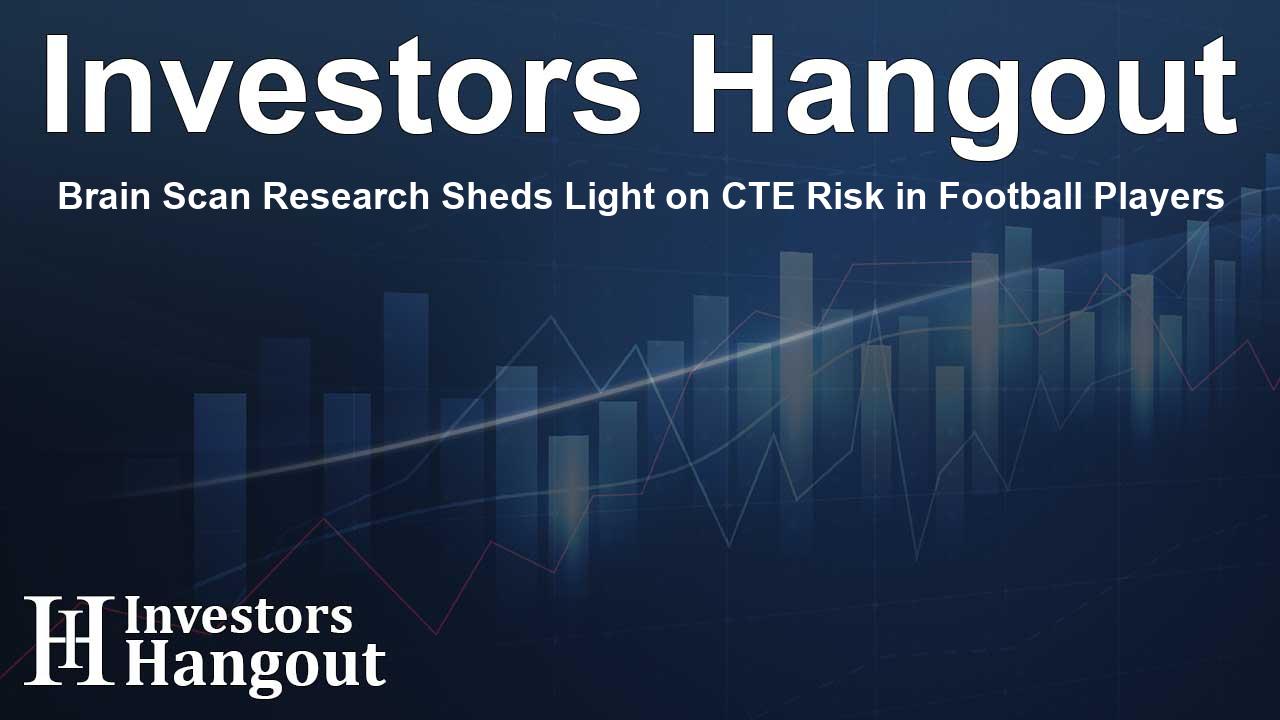Brain Scan Research Sheds Light on CTE Risk in Football Players

Understanding CTE Through Brain Imaging Studies
Recent advancements in brain imaging have unveiled critical information about the potential risks associated with chronic traumatic encephalopathy (CTE) in athletes, particularly those involved in contact sports like football. This significant development has opened up new avenues for research and understanding of how these brain injuries may affect long-term health.
Key Findings from Brain Imaging Research
Studies reveal that brain scans of football players exhibit subtle yet distinctive differences compared to scans of healthy males who have never participated in contact sports. These variations in brain structure could serve as important predictors of individuals' risk for developing CTE, a severe neurodegenerative condition linked to repetitive head trauma.
A recent investigation led by NYU Langone Health focused on the morphological changes in the brains of football players. The research highlighted that the left superior frontal sulci in these athletes were generally shallower than those of their non-football-playing counterparts. This groove, located on the upper front left side of the brain, has been recognized for its involvement in CTE pathology.
CTE and Its Long-Term Effects
Chronic traumatic encephalopathy is a progressive condition that can worsen over time, primarily impacting those who are frequently subjected to head impacts. Although CTE is often identified through post-mortem examinations, the ability to detect these changes in living individuals marks a pivotal stride in medical science. This advancement allows for early detection and potential intervention strategies to mitigate long-term cognitive decline.
Beneath the Surface: MRI Analyses
The implications of this research extend to the methodology used. The study analyzed MRI brain scans from 169 former college and professional football players, comparing their results to those of 54 similarly matched individuals who had no history of engaging in collision sports. This method ensured accuracy in examining the specific brain alterations associated with athletic participation.
Research Insights from the Study Team
Senior investigator Hector Arciniega, PhD, emphasizes the importance of these findings, indicating they may represent initial structural differences in the brains of individuals at a higher risk for developing CTE compared to those at lower risk. This research not only brings awareness to the risks of playing contact sports but also highlights the potential for further studies aimed at understanding the brain's reaction to repeated injuries.
Future Directions in CTE Research
While researchers caution that the development of a clinical diagnostic test for CTE remains on the horizon, the current findings provide hopeful insights into the future of preventive measures. If subsequent investigations validate these initial observations, an array of biomarkers could potentially enhance risk assessments for CTE, paving the way for more comprehensive preventive strategies within sports medicine.
Arciniega and the team aim to extend their research beyond football by exploring risks in various contact and collision sports, thereby broadening the understanding of brain health and injury prevention across different athletic domains.
Recruitment of Study Volunteers and Methodology
The study specifically recruited college players with at least six years of experience, as well as professional players who had dedicated a minimum of twelve years to the sport. This intentional selection was crucial to gather meaningful data regarding the correlation of gameplay experience and brain structure changes. Interestingly, players in less exposed positions, such as quarterbacks, were excluded from the study.
Supporting Institutions and Funding Sources
This important research received substantial support from various National Institute of Health grants aimed at advancing studies in cognitive health. Such backing underscores the potential seriousness of findings related to CTE and the necessity for continued exploration and scrutiny in this area.
About NYU Langone Health
NYU Langone Health operates as a leading integrated healthcare system, recognized for its exceptional patient outcomes. It provides a wide array of medical services across multiple locations and is notable for its focus on quality care. The system's commitment to fostering research and academic excellence enhances its role in addressing neurological health challenges, thereby aiming to improve lives through informed healthcare strategies.
Frequently Asked Questions
What does the recent research about brain scans reveal?
The research indicates distinctive differences in brain structures of football players, potentially signaling risks for chronic traumatic encephalopathy (CTE).
Why is identifying CTE risk important?
Identifying CTE risk is crucial for developing early interventions to prevent irreversible brain damage associated with the disease.
How does the research compare football players to non-players?
The study compared MRI scans of football players to those of individuals who never played contact sports, revealing significant structural differences.
What future directions are suggested for CTE research?
Future research aims to examine more contact sports and various brain regions to enhance understanding of CTE development and prevention.
Who led the study on CTE and brain scans?
The study was led by an international team of researchers affiliated with NYU Langone Health, focusing on advances in neuroimaging to assess CTE risks.
About The Author
Contact Henry Turner privately here. Or send an email with ATTN: Henry Turner as the subject to contact@investorshangout.com.
About Investors Hangout
Investors Hangout is a leading online stock forum for financial discussion and learning, offering a wide range of free tools and resources. It draws in traders of all levels, who exchange market knowledge, investigate trading tactics, and keep an eye on industry developments in real time. Featuring financial articles, stock message boards, quotes, charts, company profiles, and live news updates. Through cooperative learning and a wealth of informational resources, it helps users from novices creating their first portfolios to experts honing their techniques. Join Investors Hangout today: https://investorshangout.com/
The content of this article is based on factual, publicly available information and does not represent legal, financial, or investment advice. Investors Hangout does not offer financial advice, and the author is not a licensed financial advisor. Consult a qualified advisor before making any financial or investment decisions based on this article. This article should not be considered advice to purchase, sell, or hold any securities or other investments. If any of the material provided here is inaccurate, please contact us for corrections.
